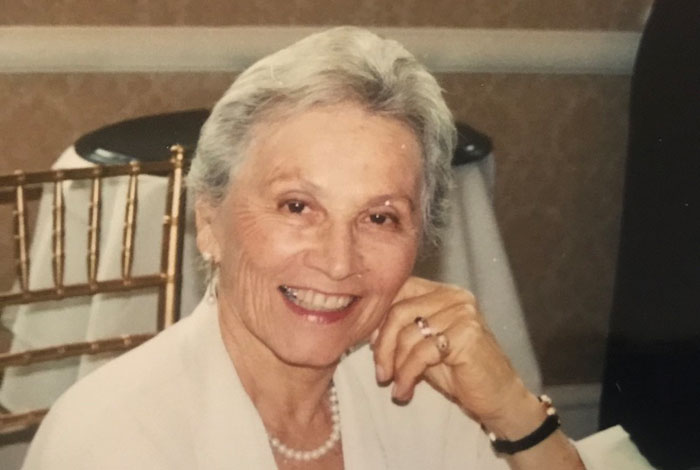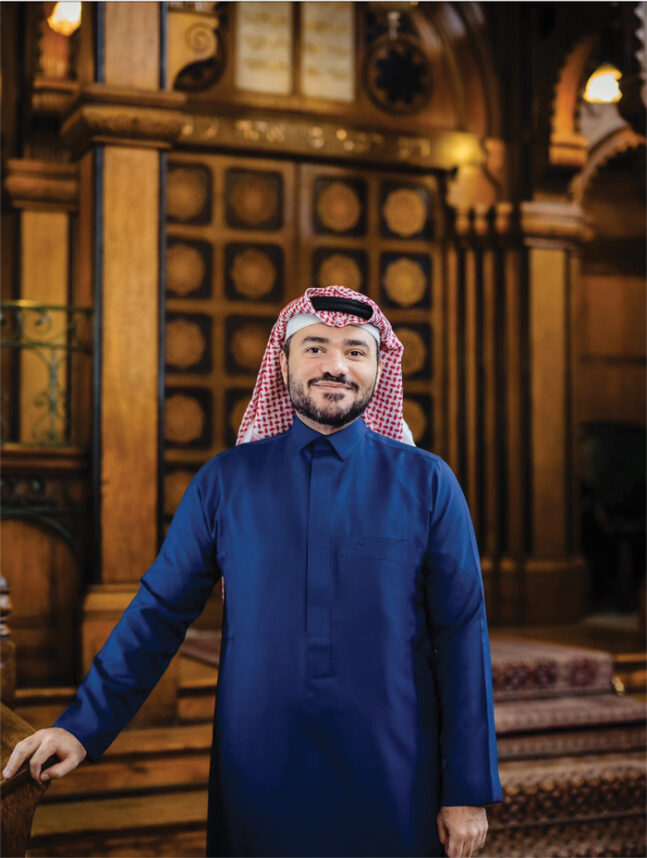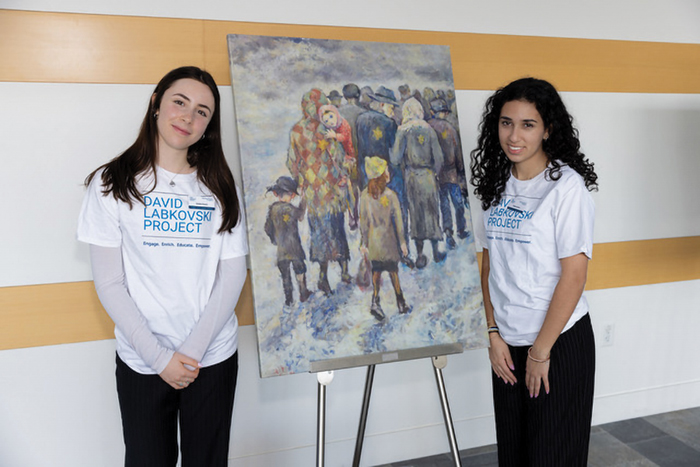In recent weeks, race relations have dominated national news in the United States, carried by a wave of incidents of striking similarity: A white male police officer kills an unarmed black man; his community grieves over the injustice. Protests, and sometimes riots, ensue, but in the end the officer involved is not charged with a crime for the death, and sometimes not even disciplined.
In a lengthy interview last week, Steve Soboroff, president of the Los Angeles Police Commission, gave his take on issues of race and policing, both nationally and in L.A. Soboroff, a developer and past chairman and CEO of Playa Vista, was appointed to the commission by Mayor Eric Garcetti in 2013, but he has for decades been an official and unofficial adviser to politicians and organizations around Los Angeles. He spoke over lunch at Nate ’n Al delicatessen in Beverly Hills.
Jewish Journal: What steps do you think the Justice Department should take in Ferguson, Mo., where the unrest since the death of Michael Brown has been a springboard for a national movement of similar protests?
Steve Soboroff: The experience that the Los Angeles Police Department [LAPD] went through, being put under a federal consent decree — federal oversight — [for more than a decade after the Rampart corruption scandal first revealed in 1999] turned out to be a blessing. And without judging Ferguson, it looks to me as if that kind of oversight — the kind a department has under a federal consent decree — may be a best-case scenario for implementing change and regaining the trust of the people.
JJ: Do you think it needs to be easier to indict police officers in this type of situation?
SS: No, I don’t. Being indicted has to do with an officer’s intent to commit bodily harm or homicide, and there is a difference between that and poor policing, between intent and not following policy. You don’t go to jail for not following policy. I believe the policy needs to be clear. Community policing has to be from the bottom up, and policy needs to be from the top down. And the kinds of policies officers need to be trained in now are community policing policies, preventative policing.
Community policing policies are the reason we are at a 40- to 50-year low in crime rates [in L.A.], not because our guys are tougher or are better shots. We don’t often shoot our guns. I think there were 39 incidents last year, and some of those were on pit bulls attacking officers, and some were accidental discharges. But that doesn’t mean that if there are 15 incidents, for example, that that isn’t 15 too many.
JJ: Because you brought up local officer-involved shootings — there was community concern recently regarding the killing of Ezell Ford, an unarmed, mentally challenged Black man, by two LAPD gang officers. There were differing accounts from the officers and from community members regarding what occurred, and frustration with how long it is taking for the department to release evidence.
SS: But that’s the case in every case. A universal, unifying truth is that if you put four people in a room, you will get five different views. Before cases come to us for adjudication at the commission level, there is an incredible amount of cold science that goes into the investigation. What you don’t want to do is release all of your science and then have witnesses call up just to affirm what they have heard. We want to hear what the witnesses say in order to see which statements match the cold science, and the delay that causes can be frustrating to the public. I understand that.
JJ: You have been a strong advocate of on-body cameras. You mentioned it in your speech the day you became a commissioner, saying that we need it “within 18 months, not 18 years.”
SS: We are going to beat that. I made that statement Sept. 10, 2013, so 18 months would be March 2015. We are OK.
JJ: And I imagine an official policy on how the on-body cameras will be used is to be made public?
SS: Yes. In forming a policy, the issue isn’t the equipment; it’s the use or abuse of the equipment. The policy will answer the question of when a camera should go on, and when it should go off. The policy is probably going to say that the camera must be on whenever there is a pending arrest, or something like that. But storage is important as well — the fact that the officer cannot delete or add to a tape.
JJ: Shifting to another issue the LAPD is currently facing: The Los Angeles Times recently reported an alleged misclassification of about 1,200 violent crimes as minor offenses over a year period. Is the department conducting its own investigation? And if so, what has it found?
SS: Sure we are. That report came as a result of a number of meetings with The Times, over specific incidents. And one incident is too many. But it isn’t a systemic, department-wide issue. Some people misclassify things, there are technology errors, and there are misunderstandings because of a lack of uniformity. What I got out of our meetings is that the rules need to be clearer on every level.
But we also need to consider the perception that is coming out of an article and how to then deal with it. Perception of the police department by the community is important to us — in every community, at every income level, and every color, religion and neighborhood. That’s why we go to the churches and into communities — to build what the chief calls “a bank of trust.”
JJ: In 2009, Harvard released an LAPD-commissioned study on the department’s years under the consent decree, which included high praise for the police. It noted that the LAPD is now about as racially diverse as the city of Los Angeles. It also found that the LAPD had, quite remarkably, reduced crime and increased community satisfaction while also increasing law-enforcement activity.
SS: We are the finest police department in America. Period. There is no question about it. Are we perfect? No. Do we make mistakes? Yes. But that does not mean we are not a great police department full of great people. It is a difficult job.
JJ: Let’s return to the Harvard study. It also said that there was a “troubling pattern in the use of force” against African-Americans, echoed by a lower level of confidence. What has the LAPD done since 2009 to remedy this, and what efforts do you think still need to be made institutionally, and to make officers challenge their personal preconceptions?
SS: Between 2009 and now, community policing has developed from a concept into an intuitive part of everyday policing. A police station is not just this place you go to if you are a bad guy; it is a part of the community. Our officers are out in the field, and they know people’s names that live in their communities.
Does that mean that every single community feels the same? No, it doesn’t. And whether or not their feelings are justified is not the issue to me or to the chief. It is that they have negative feelings at all — they have a perception, and that is what we have to work on. Because you can’t stand up to a group of people who feel one way and talk them out of what they are feeling. You have to show them; you have to work with them.
JJ: Do you think there is more the LAPD needs to do with regard to its relationship with African-American communities, and, in particular, with the perception that Blacks are being unjustly targeted? The Harvard study showed, at least through 2009, that Blacks are stopped and arrested disproportionately to other races.
SS: We don’t racial profile. Do we criminal profile? Yeah. I believe that a lot more communication, and a lot more preventative, programmatic things need to happen in a number of communities, and with a number of gangs — whether they are African-American gangs or Latino gangs.
JJ: Let’s look at just one statistic — narcotic-related arrests, for example. It is one thing to say, “We don’t have a policy of racial profiling,” but the data shows that it is occurring regardless.
SS: One statistic I do know well is that if you look at our homicide rate — last year there were 251 homicides, you need to ask, how many of those were gang-on-gang? How many of those were Black-on-Black, or Latino-on-Latino? An inordinate number. There are so many variables in these things, but what is important is what the solutions are and what we can do better.
Did you see what happened in New York [on Dec. 3] with the cop [Daniel Pantaleo] that choked and killed Eric Garner? The grand journey didn’t indict him, and that incident was on tape. But the issue is not did he do it or not. The issue is, was his intent to kill or to hurt, or did he just do a lousy job of arresting Garner? But that doesn’t mean [Pantaleo] didn’t do a ridiculously horrible thing. It should have never happened.
JJ: A similar incident happened here with killing of Jorge Azucena — the man with asthma who died while an officer was arresting him because the officer didn’t believe him when he said he couldn’t breathe.
SS: Yeah. That is bad training and bad policing. But these cases aren’t felonies.
SS: That was tragic, and I am not familiar with the details or the adjudication results.
JJ: You don’t think these are felonies?
SS: No. When there are felonies, we go after them.
SS: We determine in policy vs. out of policy. Felony determinations are made by the DA, the Grand Jury or others, as are the decisions to prosecute.
JJ: What other issues do you think the LAPD is currently facing?
SS: We are losing too many officers. And the people that come in to replace them have one thing in common — they have no experience. The overall level of experience of LAPD is dropping, and it is not sustainable. We have to fix that.
This interview has been edited and condensed.
FOR THE RECORD: Two responses at the end of this article were changed at the request of interviewee Steve Soboroff to better clarify his intended meaning. The original response taken from the spoken interview also is included here, in strikethough mode.





















 More news and opinions than at a Shabbat dinner, right in your inbox.
More news and opinions than at a Shabbat dinner, right in your inbox.